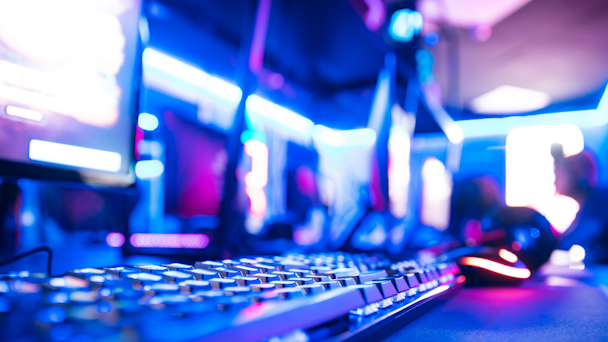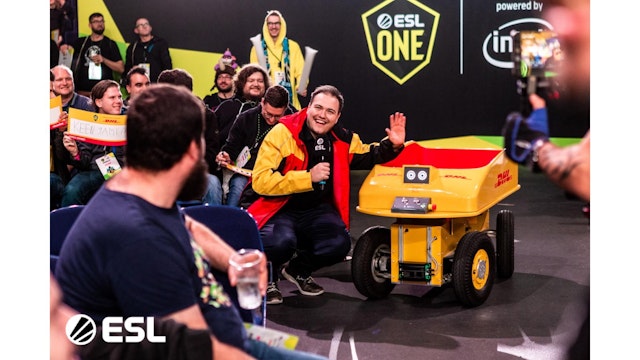What brands need to know when entering esports in 2021
Rodrigo Samwell, chief commercial officer, ESL Gaming, explains what’s changed for brands entering esports as we move beyond the pandemic, with clients more willing than ever to spend in the space.

Many brands are keen to dip into the growing world of esports
The rapid rise of esports is no secret, and the last 16 months tell us that it has no intention of slowing down. The industry’s ability to move competitions online during the pandemic quickly showed the agility of esports, which has made it one of the few to come out of the pandemic in a better place than it went in.
To put this in perspective, according to Newzoo total esports audience figures grew 11.7% last year, with the prediction they will hit almost 650 million in the next couple of years. Gaming in general is growing at an accelerated pace, fast becoming part of the lifestyle of a big chunk of the world’s population.
The total audience for esports is set to hit over 600 million and there are currently 3 billion gamers in the world, so there are ample opportunities for brands to be involved in the industry. However, successful partnerships require credibility and authenticity to engage with a dedicated community.
As brands see the opportunity, some decide to learn about esports and test with different or smaller engagement opportunities, from influencers to players to teams. Others try a more complete approach with partners such as ESL. Whatever brands test, the conclusion is clear. The best return on investment and authenticity toward the gaming communities comes from a long-term, consistent plan. Credibility takes time to build in esports – it is not a one-off investment only.
Now as we look to move out of the pandemic, what are the opportunities for brands to enter the space, and how can esports help them rethink how they reach their audiences?
Physical and digital opportunities
Before the pandemic, the ability of esports to sell out large arenas to passionate gaming fans was not in doubt. For example, one of our yearly events – the IEM Katowice in Poland – regularly greets more than 170,000 visitors, with the large Spodek arena sold out every year. But then our events moved online, so there was no disruption in the competitions. We expect that with vaccination programs being rolled out across the world, those days might not be too far off from returning.
ESL operates esports tournaments and leagues throughout the year and is known for its weekend-long in-person competitions that create a festival atmosphere around elite esports. ESL and DHL truly showed what is possible when it comes to activating a non-endemic brand within esports at live events.
It was the unlikely hero of DHL’s automated warehouse robot EffiBOT that stole the hearts of the ESL One audience. When brands do it right, the love they receive from the esports fans is impressive. In the case of DHL, hearing full arenas with tens of thousands of fans chanting “DHL, DHL, DHL” became a common happening before the pandemic and will return soon.

Online presence is the backbone of brand partnerships in esports, so during the pandemic audiences continue to grow. In-person events offer live performances, giveaways or guest appearances. These complement the full year of content and engagement plans from brands.
We ran purely online events during the pandemic and took the opportunity to innovate on online broadcasts. With heightened livestream coverage, greater integration of hosts, analysts, players and fans, and virtual reality giving fans the chance to feel part of the action, the package available to brands to merge the physical and digital in esports will have never been greater as live events return.
Cultural gaming v competitive gaming
Gaming titles are continuing to partner with global personalities and brands who are the crème de la crème in their fields to break into the mainstream and build awareness among gamers and non-gamers alike organically.
Global brands in music, fashion and tech are getting in on the action. Merchandise collaborations frequently sell out as gaming fans flock to get the latest limited-edition item from their favorite team. You only have to look at the industry announcing its first ‘Fashion Week’ to see the ambition of esports to broaden its reach and insert itself into popular culture.
Meanwhile, mobile esports is quickly becoming a big piece of the puzzle. This comes partly from the fact that everyone has a mobile device and therefore can compete at some level. The nature of ESL esports competitions starts with online qualifications open to everyone, while later stages have the best players competing. This open format allows levels of participation like we have not seen before, allowing brands to engage with fans throughout all the stages and not just at the top professional level of esports.
Casual gaming has already seen the staggering impact of what transcending culture can do for the industry, and as esports continues to grow it won’t be far behind stamping its authority on pop culture – making it an attractive proposition for brands.
Brand affinity
Central to all brand work within the industry is to be like-minded to esports fans. The first thing to learn is that there are many gaming communities, not just one.
Each game has its own community, a sort of a tribe per game, and each community is able to spot imposters from afar and able to see which brands only want their logo to be seen on a team jersey or be broadcast. Brands need to work with partners that understand the space to create something of value for the fans. Our experience is that brands that do purpose-led engagement and help to improve esports over a long period of time become loved brands.
We’ve seen some of the biggest brands in the world choose to make esports a huge part of their strategies. However, it’s essential to note that it’s not an easy path to success.
Credibility and authenticity are fundamental in delivering positive sentiment with the dedicated esports community. Nothing shows this more than the ESL and Intel partnership, which is the longest-running commercial arrangement in the esports industry. It shows with a robust and consistent plan, brands are able to ride the esports wave to generate deeper relationships with fans for many years, and therefore improve awareness and loyalty toward their products.
